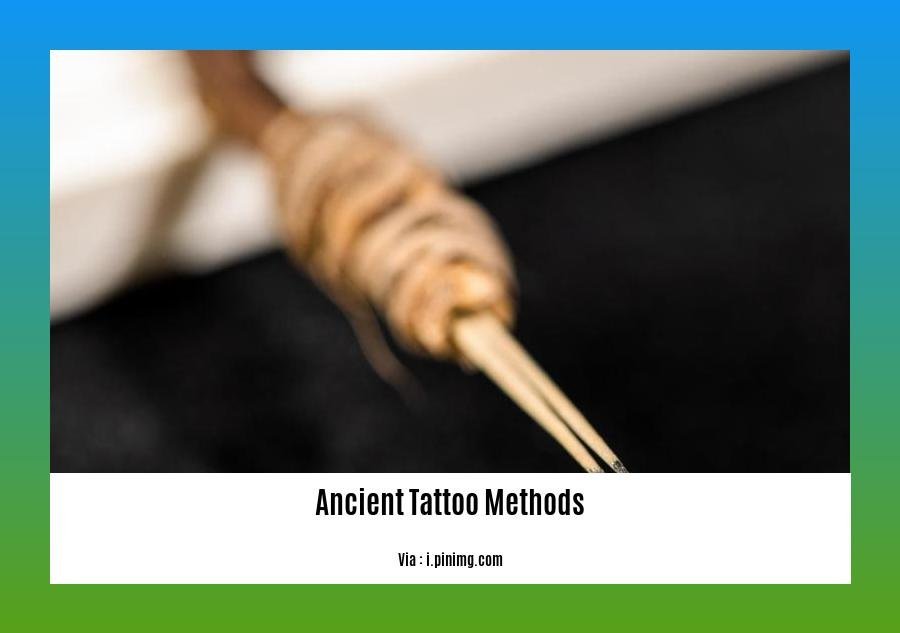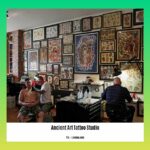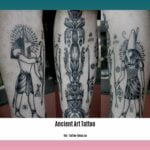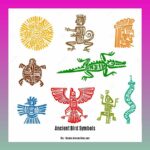Embark on a captivating journey through [An Exploration of Ancient Tattoo Methods: Unveiling Cultural Significance and Historical Practices]. Explore the intriguing realm of traditional tattooing, immersing yourself in diverse cultures across the globe. Discover the rich symbolism and rituals embedded in these enduring marks, delving into their cultural, social, and spiritual significance. Uncover the stories etched into ancient skin, revealing a captivating tapestry of human history and artistic expression.
Key Takeaways:
The practice of tattooing dates back to the Neolithic era.
Ancient tattooing needles have been found from the Upper Paleolithic period.
Austronesians used a hafted skin-puncturing technique.
Papuans and Melanesians used obsidian skin piercers.
Ancient tattoo methods included puncturing and cutting the skin.
Tattooing has a rich history among Papuans and Melanesians, with unique tools and techniques.
Ancient Tattoo Methods
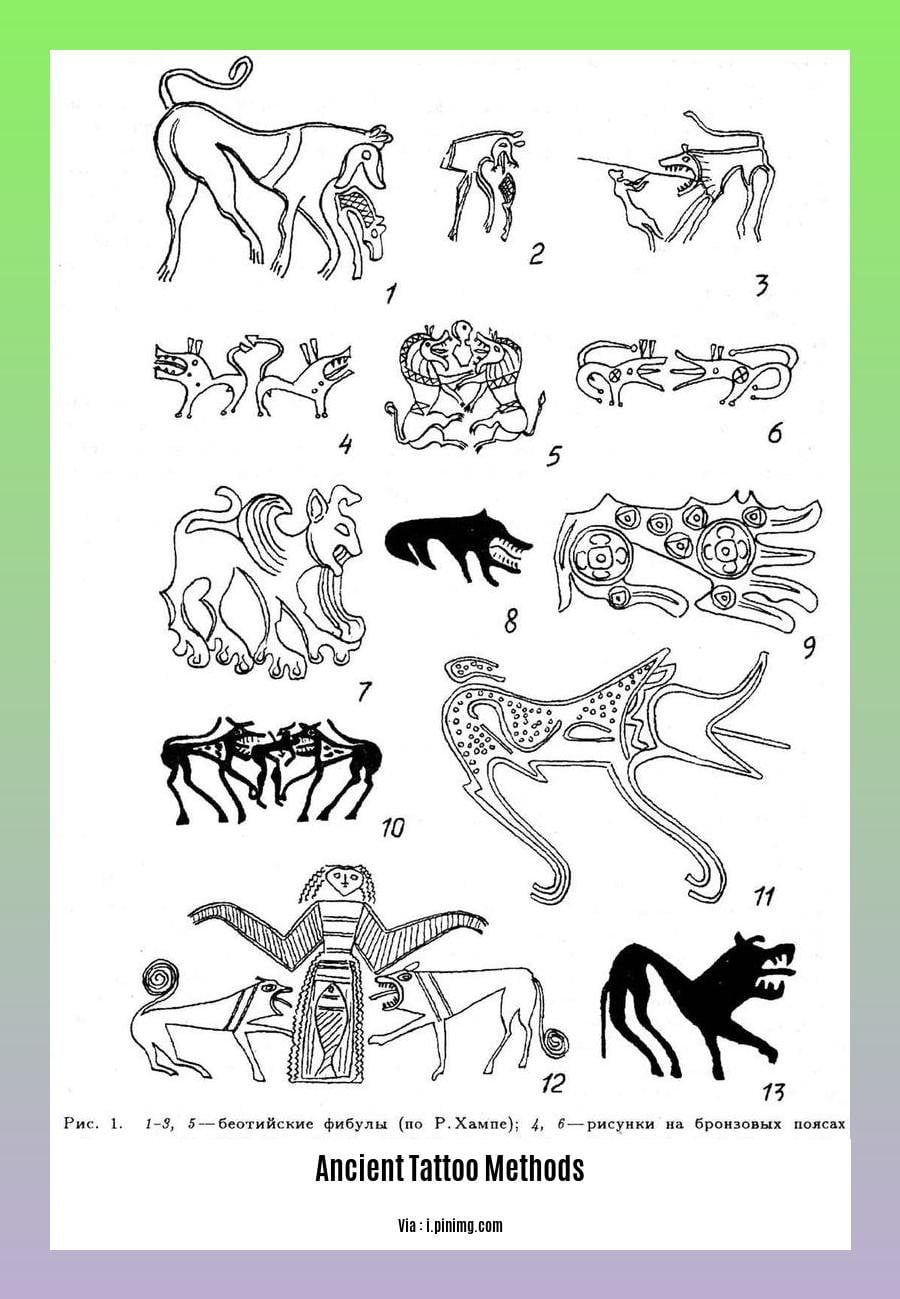
Since the Neolithic era, tattooing has been employed as a means of cultural expression, status affirmation, and spiritual devotion. Ancient tattooing was a complex and diverse art form that varied across cultures and civilizations.
Techniques of Tattooing
Ancient tattooing methods ranged from simple hand-tapping techniques to more elaborate tools and technologies.
Hand-tapping: Primarily employed by Austronesians, this technique involved using a sharp object like a bone or needle to puncture the skin, followed by applying ink to the wound.
Skin-Piercing Tools: Papuans and Melanesians used distinctive obsidian skin piercers with serrated edges that simultaneously cut and punctured the skin.
Puncturing and Cutting: Tattooing techniques involved puncturing or cutting the skin in various forms. Puncturing involves entering the skin at an angle, while cutting entails making shallow incisions to create designs.
Cultural Significance of Ancient Tattoos
Ancient tattoos held profound cultural significance, communicating social status, cultural identity, and personal narratives.
Social Status: Tattoos often denoted a person’s rank, achievements, or affiliation with a particular social group.
Cultural Identity: Tattoos served as markers of cultural identity, distinguishing different ethnic groups and tribes.
Personal Narratives: Tattoos could convey personal stories, journeys, and significant life events.
Regional Variations in Tattooing
Tattooing practices displayed remarkable diversity across different regions:
Polynesian Tattoos: Polynesian tattoos were intricate and elaborate, often covering large areas of the body and symbolizing aspects of the wearer’s identity, status, and lineage.
Japanese Tattoos: Japanese tattoos, termed “irezumi,” depicted mythological creatures, folklore, and historical scenes, symbolizing strength, courage, and loyalty.
Borneo Tattoos: The Dayak people of Borneo practiced tattooing as a rite of passage, marking milestones in an individual’s life and signifying their connection to the spirit world.
In contemporary times, ancient tattoo methods continue to inspire modern tattoo artists, merging traditional techniques with modern innovations to create unique and meaningful body art.
If you’re fascinated by historical weaponry, delve into the world of ancient throwing weapons, where warriors wielded javelins, throwing axes, and boomerangs with deadly precision.
Traditional Practices by Regions
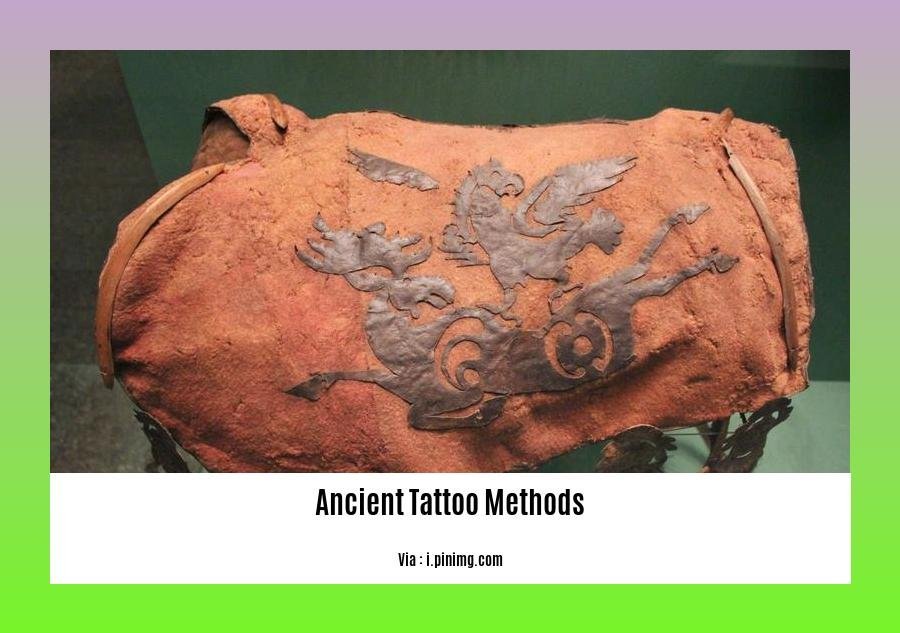
In our expedition across the annals of ancient tattooing methods, we embark on a journey through diverse regions, unveiling the cultural significance and historical practices embedded within these enduring marks on the human body.
Key Takeaways:
Ancient tattooing techniques reflect cultural expressions and traditions, varying across regions and communities.
Tattooing methods have evolved over time, showcasing ingenuity and resourcefulness in creating permanent body art.
Traditional tattooing practices serve as a testament to cultural identity, social status, and spiritual beliefs.
Tattooing tools and techniques have adapted to local resources and cultural preferences.
Preserving and revitalizing traditional tattoo methods ensure their continuity and significance in contemporary societies.
Across the vast tapestry of time, ancient tattooing methods have left an indelible imprint on cultures worldwide. From the intricate hand-tapped designs of the Australasian and Pacific Islanders to the delicate bamboo tattoo technique of Japan, each region’s traditional practices reveal unique stories and cultural expressions.
1. Australasian and Pacific Islands: Hand-Tapped Tattoos
The rhythmic tapping of the L-shaped tool echoes the ancestral wisdom of Australasian and Pacific Islander tattooists. This method employs a sharp tool and a hammer to create minute punctures on the skin, where ink is meticulously deposited, forming intricate and bold patterns.
2. Japan: Bamboo Tattoo Technique (Tebori Piercing Technique)
In Japan, the bamboo tattoo technique, known as Tebori, elevates tattooing to an art form. Skilled tattooists wield a bundle of sharpened bamboo needles, guided by a steady hand, to puncture the skin and infuse it with ink, resulting in exquisite and detailed designs.
3. North America: Skin Stitching (Puncture Technique)
Native American tribes in North America employed a distinctive skin stitching technique. Using a thread and needle, they meticulously stitched patterns onto the skin, creating raised designs that served as cultural markers and symbols of identity.
4. Polynesia: Ink Rubbing (Cutting Method)
The ancient Polynesians employed a technique known as ink rubbing. With a sharp blade or knife, they skillfully cut the skin, then rubbed ink into the wound, creating bold and striking designs that symbolized lineage, status, and achievements.
5. Global Origins: Hand-Poked Tattoo Technique (Stick-and-Poke Method)
The simplicity of the hand-poked tattoo technique has made it a universal method across cultures. Using a sharp needle or thorn, tattooists pierce the skin and deposit ink, creating intricate patterns and designs that embody cultural traditions and beliefs.
FAQ
Q1: What are some ancient tattooing methods that have been practiced by different cultures around the world?
A1: Traditional tattooing methods include the hand-tapped technique used by Australasian and Pacific Islanders, the bamboo tattoo technique from Japan known as Tebori, skin stitching practiced in North America, ink rubbing or the cutting method found in various cultures, and the hand-poked tattoo technique or stick-and-poke method which is also commonly found across diverse cultures.
Q2: How did the Papuans and Melanesians tattoo their skin?
A2: The Papuans and Melanesians used distinctive obsidian skin piercers to create tattoos on their bodies, showcasing their unique technique in traditional tattooing.
Q3: What is the hafted skin-puncturing technique used by Austronesians?
A3: The hafted skin-puncturing technique employed by Austronesians involves the use of a sharp tool attached to a handle or haft, which is then tapped against the skin to create small punctures where ink is deposited, resulting in intricate tattoo designs.
Q4: What is the purpose of cutting the skin in tattooing?
A4: Cutting the skin is another ancient tattooing method used by certain cultures. In this technique, a sharp blade or knife is used to create incisions on the skin, and ink is then rubbed into the wounds to create permanent designs or patterns.
Q5: What are some of the cultural and historical significances associated with ancient tattooing practices?
A5: Ancient tattooing holds deep cultural and historical significance across various regions. Tattoos have been used to symbolize status, mark rites of passage, showcase bravery, represent religious beliefs, and tell stories about an individual’s journey or achievements within their community.
